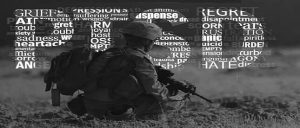I was four years old when I remember standing on the upstairs landing of my childhood home staring down at two strange men. With my stuffed bunny in hand, I frantically looked for my mom while on the verge of tears. I was scared I had “lost” my mom, when just then she came walking in the front door as if nothing was wrong, because in fact nothing was wrong. These men were here remodeling our kitchen, and I was safe as could be.
I had always wondered why that memory was so firmly stuck in my brain. I remember what I was wearing, how sunny it was, and how the men tried to reassure me my mom was just outside doing yard work. But the formation of that very distinct memory was more than likely due to the immense stress the four-year-old me experienced. Not all memories are formed the same, with some being strongly formed, even to the point of having a negative effect.
The Science of Making Memories
Strong memories can be made, occasionally during devastating experiences, and sometimes result in the development of stress-related disorders like major depressive disorder, anxiety, and post-traumatic stress disorder. In fact, 10-20% of those who experience traumatic events develop some type of these disorders. This mystery is being pursued fervently, with some important headway being made.
In a study performed by Johannes M. H. M. Reul, the formation of memories related to stress events was analyzed in the use of animal models where the forced swim test was applied. The premise of the test is to place rats and/or mice in water and observe the length of time it takes for them to abandon struggling and opt to float to conserve energy. After some time, they placed them back in the water and found that on average it took less time for the rats and/or mice to begin floating, showing an “enhanced behavioral immobility behavior,” which is based on the formation of the memory during that stressful initial forced swimming experience. The molecular changes and processes of these rats and/or mice gave rise to interesting results.
Stress evokes glucocorticoid hormones, or corticosterones in rats and mice, which strengthen the consolidation of memory formation via activation of glucocorticoid receptors (GR). Additionally, glutamate is released following stressful events, and it goes on to activate the NMDAR-ERK-MAPK pathway. Both the GR and NMDAR-ERK-MAPK pathways work in tandem to facilitate the activation of kinases MSK1/2 and Elk-1. This results in the acetylation of histone H3 (H3S10p-K14ac), leading to the transcription of genes like c-fos and egr1, which are immediate-early genes. The induction of the transcription of these genes is essential in the consolidation of memory formation.
A Reality of PTSD in Today’s Society
When people think of strong memories being made that result in stress-related disorders, what commonly comes to mind is soldiers experiencing PTSD at the hands of deployment, and justifiably so. Our veterans are subject to extremely stressful experiences, like front-line combat, the loss of fellow soldiers, sexual assault or harassment, and countless more.

Figure 1. Taken from VA.org – it depicts a soldier who has an experience with PTSD.1
As a result of any given war where the U.S. has been a contributor, a large number of veterans have experienced PTSD. The U.S. Department of Veterans Affairs provides astonishing information about veterans and PTSD, including:
- 11-20% of veterans of Operations Iraqi Freedom (OIF) and Enduring Freedom (OEF) developed PTSD.2
- 12% of veterans of the Gulf War have PTSD.2
- 15% of veterans of the Vietnam War were diagnosed with PTSD during the war, while an estimated 30% of the war’s veterans have had PTSD within their lifetime.2
While research is ongoing in the incurrence and treatment of PTSD in general, the reality of millions of people today is a life living with PTSD.
Sources
- https://va.org/can-cbd-oil-help-with-anxiety-ptsd-in-veterans/
- https://www.ptsd.va.gov/understand/common/common_veterans.asp